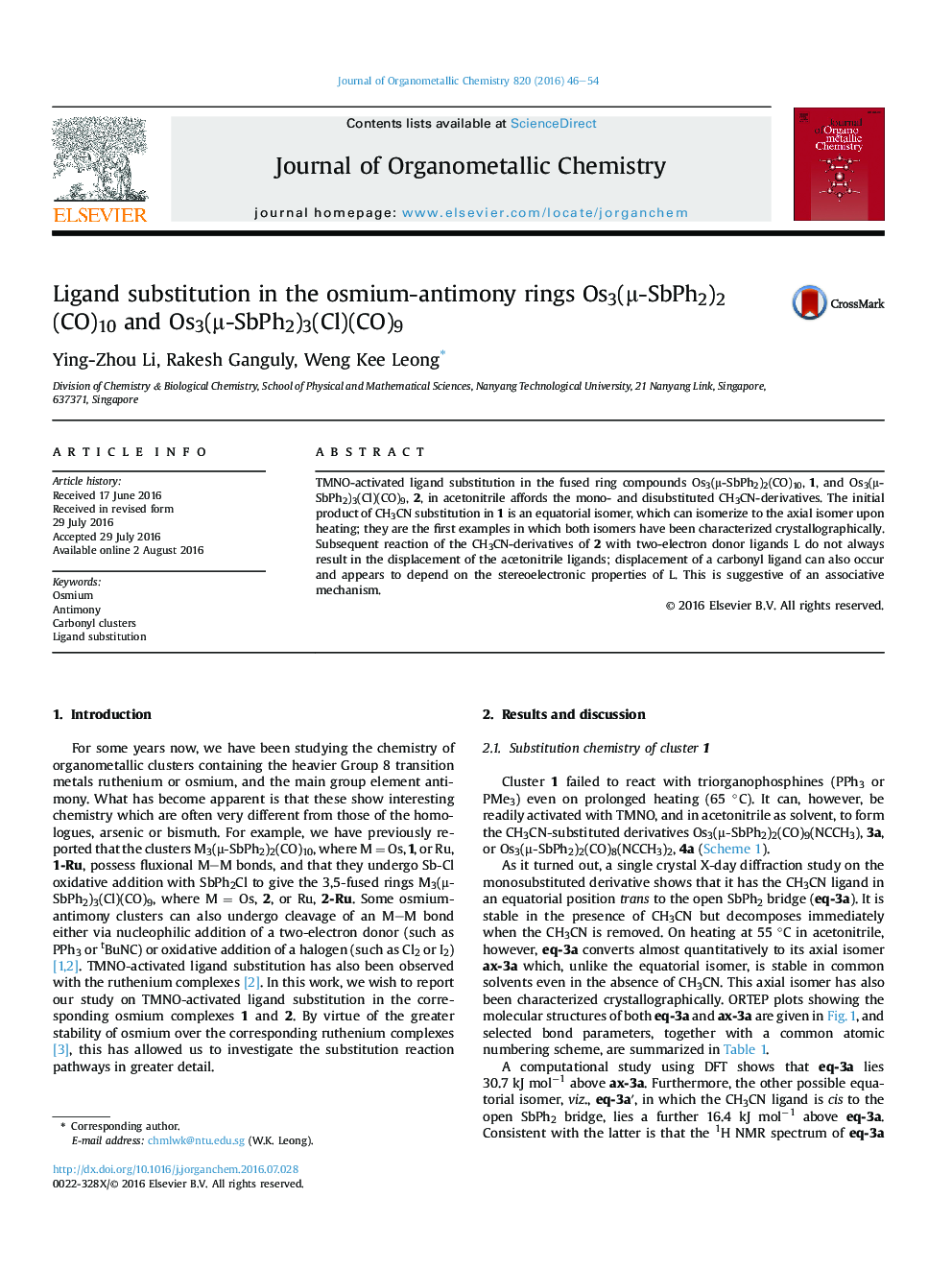| Article ID | Journal | Published Year | Pages | File Type |
|---|---|---|---|---|
| 1321582 | Journal of Organometallic Chemistry | 2016 | 9 Pages |
•TMNO-activated ligand substitution in two fused ring osmium-antimony compounds.•Initial TMNO activation is at an equatorial CO ligand trans to open SbPh2 bridge.•First crystallographically characterized example of axial and equatorial isomers of monosubstituted CH3CN-derivative.•Ligand substitution in the CH3CN derivatives proceeds via an associative mechanism.•Displacement of acetonitrile or carbonyl ligand can occur and depend on the stereoelectronic properties of incoming ligand.
TMNO-activated ligand substitution in the fused ring compounds Os3(μ-SbPh2)2(CO)10, 1, and Os3(μ-SbPh2)3(Cl)(CO)9, 2, in acetonitrile affords the mono- and disubstituted CH3CN-derivatives. The initial product of CH3CN substitution in 1 is an equatorial isomer, which can isomerize to the axial isomer upon heating; they are the first examples in which both isomers have been characterized crystallographically. Subsequent reaction of the CH3CN-derivatives of 2 with two-electron donor ligands L do not always result in the displacement of the acetonitrile ligands; displacement of a carbonyl ligand can also occur and appears to depend on the stereoelectronic properties of L. This is suggestive of an associative mechanism.
Graphical abstractFigure optionsDownload full-size imageDownload as PowerPoint slide
